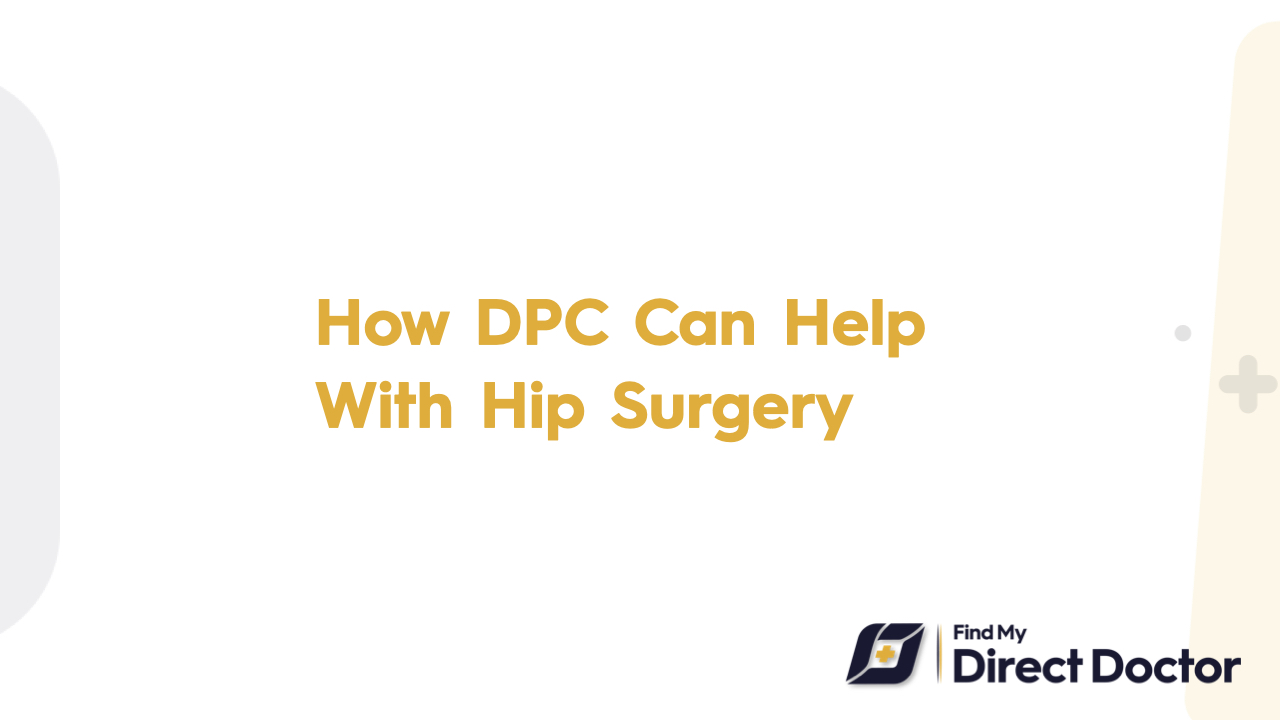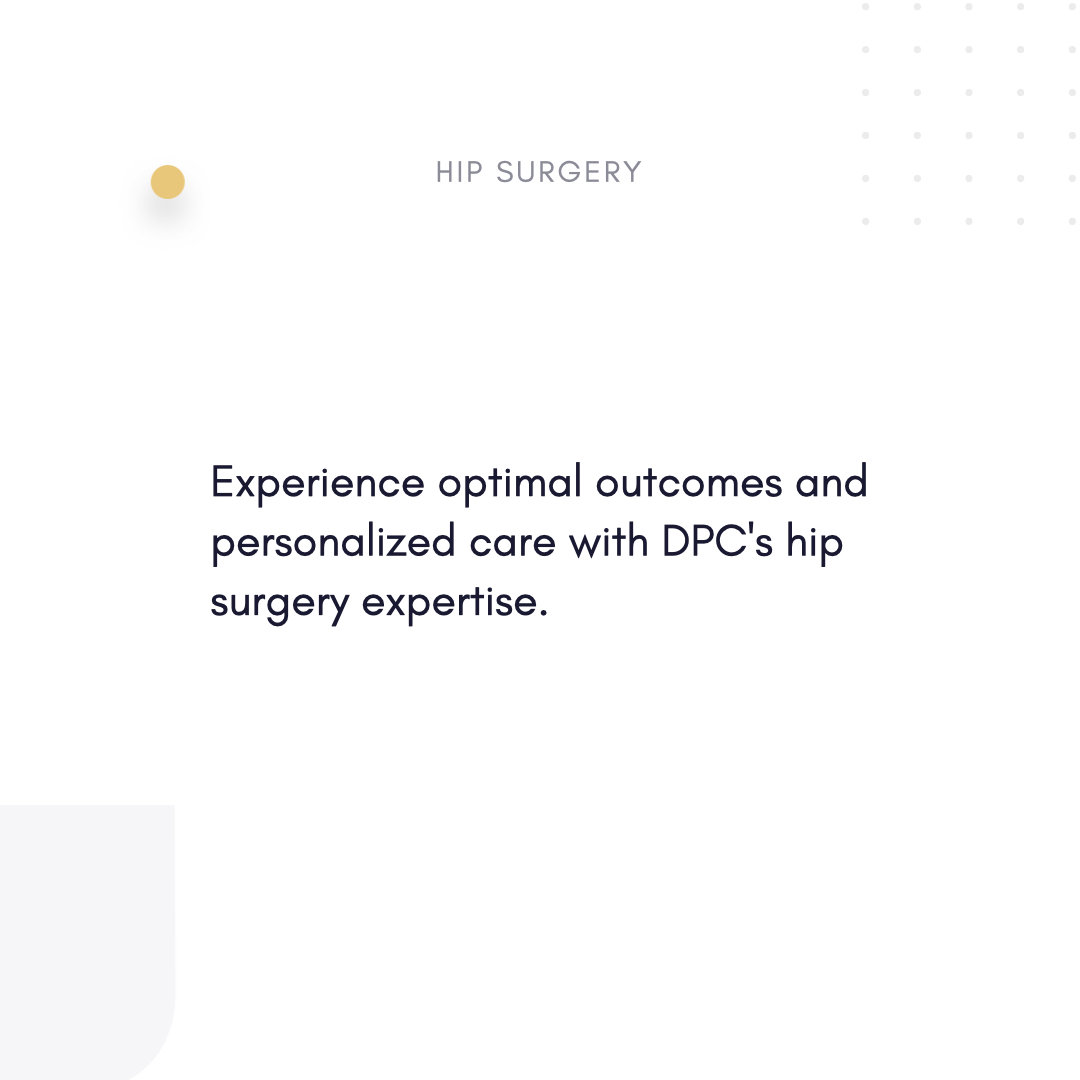Hip Surgery and Direct Primary Care (DPC): Restoring Mobility, Personalized Care
Hip surgery (replacement or repair) can help you move again if you have hip arthritis, fractures, or avascular necrosis that make it hard to do so. DPC makes sure that this life-changing procedure is done with care and expertise.

Understanding Hip Surgery: How to Move Without Pain
Some types of hip surgery are:
- Total Hip Replacement (THR): replaces a damaged joint with an artificial one.
- Hip resurfacing: keeps more bone for people who are active.
- ORIF (Open Reduction Internal Fixation): Fixes broken bones with plates and screws.
Recovery takes between 6 weeks (for resurfacing) and 6 months (for complex fractures).
Important information for patients:
- Uses: Treats osteoarthritis, broken bones, and osteonecrosis.
- Safety: 95% success rate; risks include dislocation (1–3%) or infection.
- Costs: Traditional clinics charge between 30,000 USD and 50,000 USD, but DPC lowers costs by offering bundled care.
Risks of putting off surgery:
- Long-term pain, joint deformity, and disability.
How DPC Changes the Way Hip Surgery Is Done
Direct Primary Care (DPC) replaces disjointed orthopedic care with coordinated, patient-centered assistance.
1. Full Pre-Op Optimization
- Advanced imaging: X-rays or MRIs to figure out the size of the implant or how to fix a broken bone.
- Working together with surgeons: Work with specialists in joint replacement.
- Prehab programs: Make muscles stronger to speed up healing.
2. Clear costs and full support
- Prices that include everything: Membership includes labs before surgery, physical therapy after surgery, and follow-up visits.
- Lower costs: Patients at DPC save between 10,000 USD and 20,000 USD by getting lower rates for surgery.
- Other choices: If a replacement isn't needed right away, talk about hip injections or osteotomy.
3. Recovery with kindness and the ability to move around
- Access 24/7: Take care of sudden swelling, fever, or signs of dislocation right away.
- Personalized rehab plans: Help people move safely from using a walker to doing full activities.
- Preventive care: Suggest low-impact exercises and keeping an eye on your weight.
Success Stories from Real Life
- Case 1: Maria, 65, has very bad osteoarthritis. Maria's DPC team did an anterior approach THR on her, and three months later she danced at her granddaughter's wedding.
- Case 2: John, 40, has a broken femoral neck. John's DPC provider set up ORIF, which stopped avascular necrosis.
Frequently Asked Questions: DPC Hip Surgery
- Q: How long after THR can I drive?
- A: 4 to 6 weeks for the left hip and 6 to 8 weeks for the right hip (with an automatic transmission).
- Q: Do I need blood thinners?
- A: Yes. DPC gives and keeps an eye on anticoagulants to stop clots.
- Q: Do you include visits to the home?
- A: Yes. DPC sets up in-home PT for the first two to four weeks.
- Q: What happens if my hip comes out of place?
- A: DPC makes arrangements for an urgent reduction and checks the position of the implant.
What Makes DPC the Best Place for Joint Replacement
The American Academy of Orthopaedic Surgeons (AAOS) stresses the importance of continuity. DPC gets things done by:
- Cutting down on wait times: 90% of surgeries happen within 2 weeks instead of the usual 6 months or more.
- Cutting down on readmissions: Proactive monitoring lowers complication rates by 30%.
- Saving money: By getting care in bundles, members save between 15,000 USD and 30,000 USD.
Final Thoughts
Hip surgery isn't just about putting in a new joint; it's also about getting your freedom and joy back in moving. With DPC, you get a partner who takes care of everything, from getting ready for surgery to keeping your joints healthy for life. No waiting for insurance, no broken rehab—just expert care that helps you walk, dance, and live your life again.






